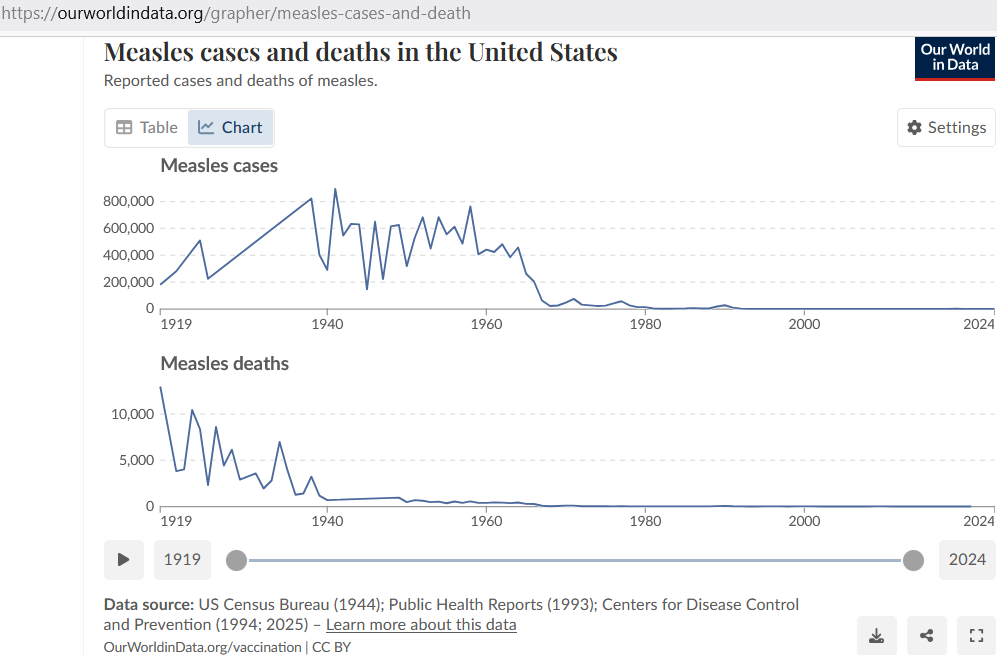Measles vaccines lose effectiveness in preventing measles over time, though the rate of loss of protection may only be about 2% to 4% per year. At 4% per year, you lose approximately all protection by Year 25 after the measles shot. By 1940 in the USA, measles was no longer a big killer:
There is recent debate regarding the benefit:harm ratio of vaccination, and one topic of that debate should include estimates of fatality caused by measles and fatality presumably caused by taking the measles vaccine. When superimposed on a single graph, the benefit:harm ratio appears to be below 1.0 (more harm than benefit):
In all years from 1992-2021, deaths after measles vaccination were at least double the deaths from measles. But keep in mind that these final numbers do not tell the whole story. In years such as the year 2000, vaccines were associated with 12 times the death of the original disease to begin with. In such years, less vaccine would be better.
Instead of 13 dead (1 by measles; 12 by vaccine) in the year 2000, if less vaccines had been given that year, then you may only have 10 dead (2 by measles; 8 by vaccine). For that year, a policy of universal vaccination would have created net harm — making it impossible (due to adverse effects) to get down to a trough of 8 or 9 or 10 total deaths.
Even non-universal vaccination had already led to 12 deaths already.
2019 is harder to arrive at the same conclusion, under assumptions of prevented deaths plus the 2 reports of deaths in VAERS that year. While the blue time series for death from measles comes from the original source up top, here is the search page that gave rise to that red time series of fatality associated with measles vaccination:






